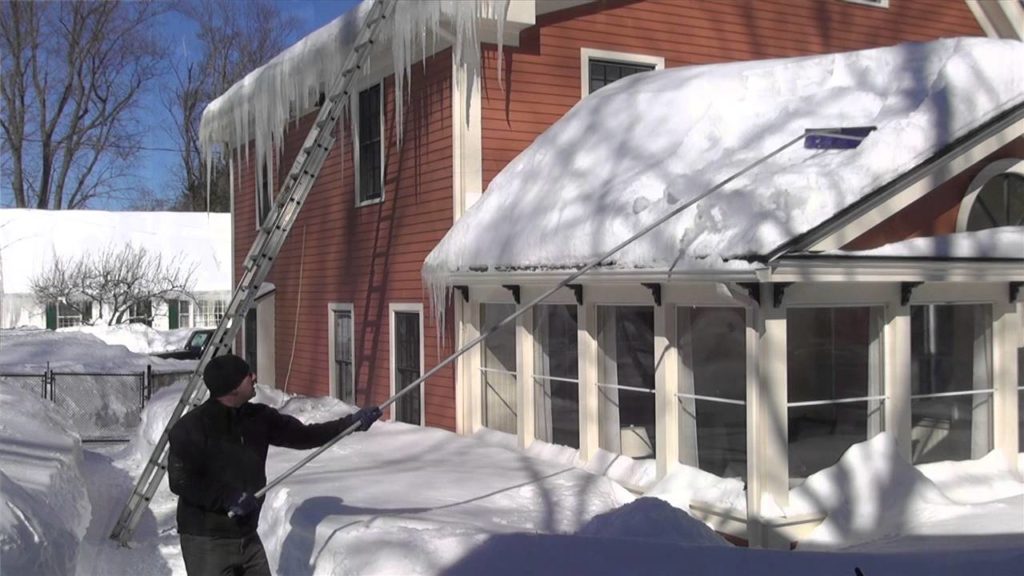Roof snow loads are computed in pounds per square foot using the ground snow load as the basis for calculation. If you are building a roof on a residential or storage structure in a region that receives snowfall, then you must consider snow load when choosing the design and materials. If too much snow falls on a weak or poorly designed roof, the roof can collapse under the weight of the snow.
The steps below show how to estimate the snow load on a roof using the ground snow load, roof properties, and formulas based on national structural engineering codes.
Step 1: Finding the Ground Snow Load G
The ground snow load is measured in pounds per square foot (psf) over a typical patch of ground during a typical snow season. You can either measure it directly or look it up in your state and local building codes. Ground slow loads vary greatly depending on the terrain and snowpack; in the northern states, it can range between 40 psf and 85 psf, while in southern states it can be as low as 10 psf.
To measure it directly, take a vertical column of snow from the ground, melt it, weigh it, and divide by the square footage of the sample.
Step 2: Finding the Exposure Factor E
The exposure factor is a value between 0.7 and 1.3, with low values for greatly exposed roofs, and high values for more sheltered roofs. If your structure is isolated with no trees or buildings nearby and exposed to high winds, the exposure factor can be as low as 0.7. If your structure is partially covered or sheltered from the wind by trees and other taller buildings, it can be as high as 1.3. For roofs that are partially or moderately exposed to the elements, use a value near 1.0.
Step 3: Finding the Thermal Factor T
If the building is unheated, use a thermal factor of 1.2. Typical occupied dwellings that are heated have a thermal factor of 1.0. For hotter, continuously heated structures such as greenhouses, use a thermal factor of 0.85.
Step 4: Finding the Roof Slope Factor R
The numbers from Steps 1 through 3 are enough to give you the roof snow load for a flat roof. If the roof is sloped, you need to account for the angle and surface type to compute the roof slope factor. The roof slope factor is given by the equation
R = (70 – X)/(70 – Y)
where X equals the angle in degrees, and Y varies by roof type:
- Type A: warm roof, slippery unobstructed surface: Y = 5
- Type B: warm roof, another surface: Y = 30
- Type C: cold roof, slippery unobstructed surface: Y = 15
- Type D: cold roof, another surface: Y = 45
If X is greater than 70, then set R = 0. If you compute R and get a value greater than 1, round it down to 1.
(Note, X = arctan(P), where P is the pitch. Example, roof pitch of 8/12 means X = arctan(8/12) = 34°. Set calculator to degree mode, not radians.)
Step 5: Putting It All Together
Once you have the values of all the factors, you can compute the roof snow load with the equation
RSL = 0.7 * G * E * T * R
Example
A building is situated in a region where the ground snow load is 60 psf. The exposure and thermal factors are both 1.0. The roof angle is 35°, Type B. This means we have G = 60, E = 1.0, T = 1.0, and R = (70-35)/(70-30) = 0.875. Thus we have
RSL = 0.7 * 60 * 1 * 1 * 0.875 = 36.75 psf.

